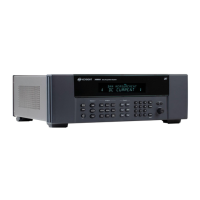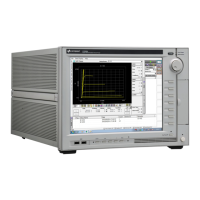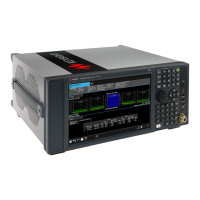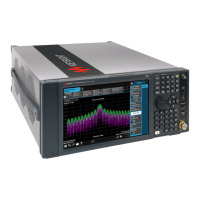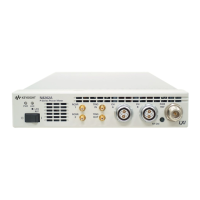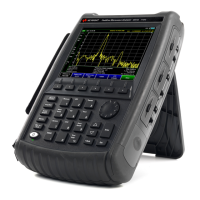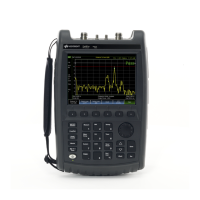Programming Examples 5
Keysight Models 6811C, 6812C, and 6813C Programming Guide 257
Generating measurement triggers
Providing that you have specified the appropriate trigger source, you can generate
triggers as follows:
– By sending one of the following over the GPIB:
TRIGger:SEQuence3:IMMediate
TRIGger:ACQuire:IMMediate
*TRG
<GET>
(Group Execute Trigger)
– By applying a signal with a high-to-low transition to the Trig In BNC
connector.
– By generating an output transient that causes the Trig Out BNC connector to
output a pulse.
– By pressing the front panel Trigger key when the unit is operating in local
mode.
Controlling the instantaneous voltage and current data buffers
Varying the voltage and current sampling rate
At *RST, the output voltage and current sampling rate is 40 kHz (period = 25 s).
This means that it takes about 100 ms to fill up 4096 data points in the voltage
and current data buffers with the information required to make a measurement
calculation. You can vary this data sampling rate with:
SENSe:SWEep:TINTerval <sample period>
The sample period can be programmed from a minimum period of 25 μs (the
default), to 250 μs in 25 μs steps.
Pre-event and post-event triggering
The ac source continuously samples the instantaneous output voltage and
current. While this is happening, you can move the block of data that is being read
into the voltage and current buffers with respect to the data acquisition trigger.
This permits pre-event or post-event data sampling. To offset the starting point of
the data buffer relative to the acquisition trigger, use:
SENSe:SWEep:OFFSet:POINts <offset>
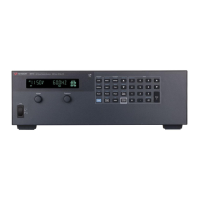
